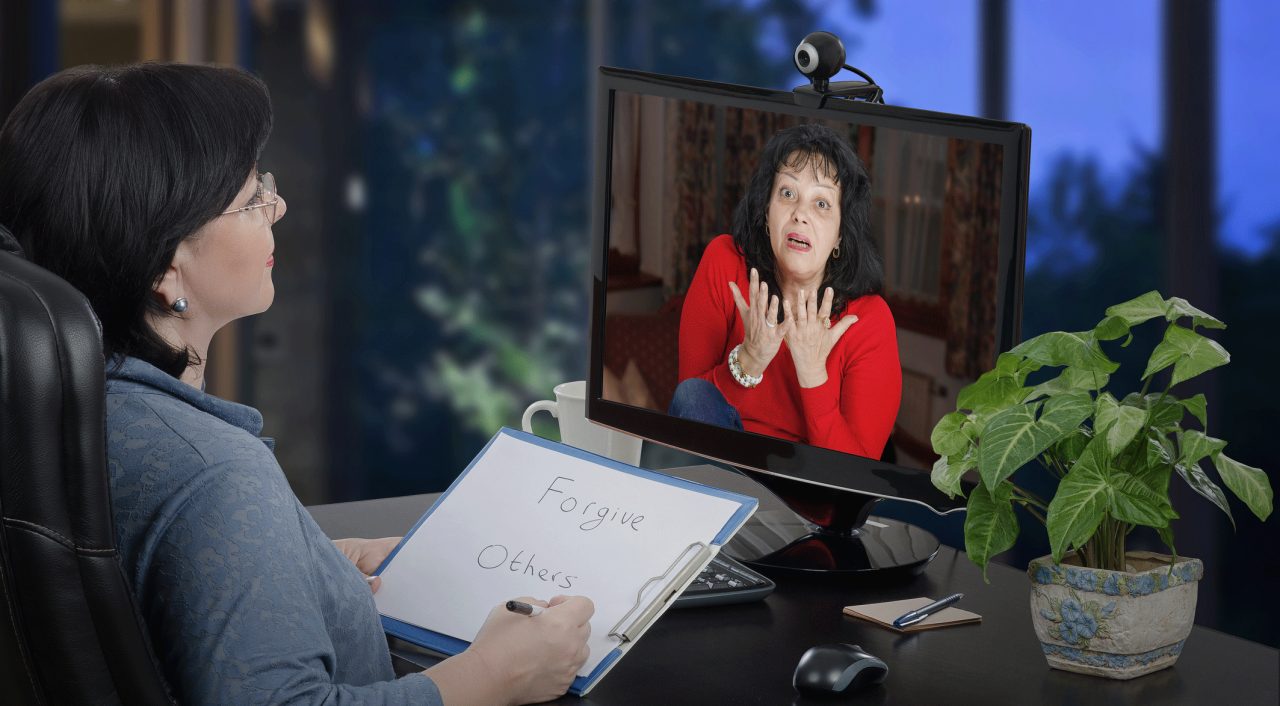The Pros and Cons of Virtual Therapy

If you have been seeing a therapist, you may have switched to video or phone sessions during the spring. Is this a good option for the future, too?
The new coronavirus (COVID-19) has created stress for us all — beyond fear of becoming ill, you might be worrying about your loved ones, your finances, or even the fate of your local diner.
If you were already seeing a therapist when people began staying home, chances are you switched to video or phone sessions. Medicare and many states extended insurance coverage during the shutdown for telehealth, which may include video. (You can check out your state’s actions here). If insurance continues to be available, some people may never go back to in-person meetings. Others may see more virtual options available and begin therapy that way.
YOU MIGHT ALSO LIKE: How the Coronavirus Is Changing Healthcare
What are the pros of virtual therapy?
The main one is convenience. Lisa Cohen, PhD, clinical professor of Psychiatry at Carl Icahn School of Medicine at Mount Sinai Beth Israel in New York, switched her busy practice to video when the coronavirus surged in the city. Months later, she’s discovered that patients are missing fewer sessions than they did in the past. If they don’t show up on screen, she can simply call them.
Busy parents have fewer reasons to reschedule when they don’t have to travel. For everyone, travel time and costs have vanished. One of Cohen’s patients, for example, was traveling an hour to see her, so his therapy took three hours out of his day. Now, from home, it takes just an hour. An elderly patient is saving the cost of a $60 roundtrip cab ride.
Distance therapy is a godsend if you have disabilities that make it difficult to travel, or babies or elders you can’t leave alone.
Distance therapy also increases the number of therapists available. It can be difficult to locate mental health providers even in cities and impossible in remote areas.
In addition, you may find this option more private, if you’re embarrassed by the possibility of running into other patients in a waiting room or gossipy coworkers who ask why you’re leaving work at 4:45 p.m. every Tuesday when you normally work late.
Is the therapy experience the same? No, not exactly, but it shouldn’t feel remote.
“There’s a certain intimacy,” Cohen said. “You’re looking into their home, and they might be looking into yours. They can show you their pictures and their cat. And their kids walk in.” (The kids walking in may not be a plus, but it’s definitely intimate.)
Melissa Stringer, a mental health counsellor, saw patients in person for nearly a decade before she moved entirely online more than two years ago. Although she was worried at first that the online experience would be inferior, she now feels the opposite: “I find that both myself and the individuals I work with probably project more authentic versions of ourselves from the comfort of our own homes,” she writes. “The thing I place the most emphasis on — the integrity of the therapeutic relationship — is not diluted in any way because we are connecting through a screen. In fact, people often tell me that their online experience has been more satisfying than their previous in-person therapy.”
It’s true that visual cues are an important part of how we read each other, and they are altered by the technology. But some patients may feel comfortable with less exposure. AbleTo, a set of 8-week distance therapy programs available in 50 states, has found that most patients prefer the telephone — and skip the video.
Patients with certain kinds of social disabilities may be more comfortable at home. For those with hearing loss, a headset can be more effective than hearing aids — or they may not own aids, which are expensive.
What are the disadvantages of virtual therapy?
The obvious problem is that the visual cues are more limited. The therapist doesn’t see how you walk, and your hand gestures may be subdued. Prolonged eye contact is the strongest cue in a video session, and it can feel threatening or overly intimate (which may help explain why AbleTo’s patients prefer the telephone).
These distortions may mean you take longer to bond with a new therapist, Cohen noted.
Older people especially may have trouble with the technology. But Cohen, who has patients in their 70s, hasn’t found it to be a problem.
Looking at a screen is tiring on your eyes, and if you’ve been sitting at a computer all day, a video-session is another 45 minutes in that mode.
The weather and problems with internet speed can interfere. You might be interrupted by a frozen screen or distorted audio. Dropped calls or echoing, low-resolution video feeds are not ideal.
If you do your session at home, pets and family members may interrupt. AbleTo medical director David Whitehouse noted, however, that patients find workarounds. They’ll sometimes prop a phone up in their car and have a session in a store parking lot.
If you are seriously ill, and could need emergency care, you may need to see a nearby counselor in person. The bottom line is that your choice will depend on your circumstances. If you wouldn’t be going otherwise, distance therapy deserves a serious look. “As an alternative to nothing, it’s fantastic,” Cohen said.
“Everybody said therapy can’t be done online or by telephone because you’ll miss too many visual cues. That turns out not to be a case,” said Whitehouse. “We can show that patients improve and turn towards normal.” And dropout rates are low.
Updated:
July 01, 2020
Reviewed By:
Janet O’Dell, RN